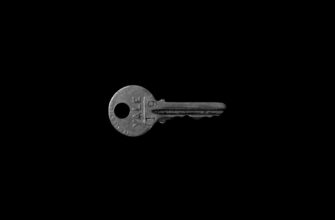🛡️ USDT Mixer — Keep Your Transactions Invisible
Protect your privacy with our lightning-fast USDT TRC20 mixer. 💨
No signups, no tracking, no compromises — available around the clock. ⏰
Enjoy ultra-low fees starting from 0.5%.
- Why Encrypting Your Private Key is Non-Negotiable
- Core Concepts: Symmetric Encryption Explained
- What You’ll Need Before Starting
- Step-by-Step: Encrypt Your Private Key with OpenSSL
- Critical Password & Storage Best Practices
- Troubleshooting Common Encryption Issues
- Frequently Asked Questions (FAQ)
- Q: Can I encrypt keys without OpenSSL?
- Q: What if I lose my encryption password?
- Q: Is AES-256 really uncrackable?
- Q: Can I automate this process in scripts?
- Q: How often should I re-encrypt my keys?
- Final Security Checklist
Why Encrypting Your Private Key is Non-Negotiable
Private keys are the crown jewels of digital security. These cryptographic assets grant access to sensitive data, cryptocurrency wallets, SSH servers, and encrypted communications. Leaving them unprotected is like leaving your house keys in the front door. Password encryption transforms your raw private key into a locked vault that requires your secret passphrase to open. This guide walks you through encrypting private keys using OpenSSL—the industry-standard tool—with precise steps even beginners can follow.
Core Concepts: Symmetric Encryption Explained
When you encrypt a private key with a password, you’re using symmetric encryption (AES-256 is the gold standard). Your password generates a unique key that scrambles the private key file. Without the exact password, the encrypted data remains inaccessible gibberish. This differs from public-key cryptography but provides essential protection for your secret keys at rest.
What You’ll Need Before Starting
- OpenSSL: Pre-installed on Linux/macOS. Windows users download from Win32 OpenSSL
- Private Key File: Your existing .key or .pem file (e.g., private.key)
- Strong Password: 12+ characters with uppercase, numbers, and symbols
- Terminal Access: Command Prompt (Windows) or Terminal (macOS/Linux)
Step-by-Step: Encrypt Your Private Key with OpenSSL
- Open Terminal
Launch Command Prompt (Windows) or Terminal (macOS/Linux). - Navigate to Key Directory
Usecdcommands to reach your key’s folder:cd ~/Documents/keys - Execute Encryption Command
Run:openssl rsa -aes256 -in private.key -out encrypted.key-aes256: Uses military-grade AES-256 encryption-in: Specifies input file (your raw key)-out: Names the encrypted output file
- Enter & Confirm Password
When prompted, type your password twice. Terminal won’t show typing for security. - Verify Encrypted File
Check success with:openssl rsa -in encrypted.key -check -noout
You’ll see RSA key ok + password prompt.
Critical Password & Storage Best Practices
- 🔒 Password Strength: Use Diceware phrases or random generators—never personal info
- 💾 Storage: Keep encrypted keys offline on encrypted USB drives
- 🚫 No Cloud Backups: Never store raw or encrypted keys in cloud services
- 🔄 Rotation Policy: Change passwords every 6-12 months
- ☠️ Destroy Raw Keys: Securely delete original .key files after encryption
Troubleshooting Common Encryption Issues
- “Unable to load Private Key”: Verify file path and format (must be PEM)
- Password Mismatch: Retry with exact casing/special characters
- OpenSSL Not Found: Reinstall OpenSSL and add to system PATH
- Corrupted Output: Check disk space and retry encryption
Frequently Asked Questions (FAQ)
Q: Can I encrypt keys without OpenSSL?
A: Yes—tools like PuTTYgen (for SSH keys) or GnuPG work, but OpenSSL remains the most universal solution for PKI keys.
Q: What if I lose my encryption password?
A: The key is irrecoverable. Without the password, even you can’t decrypt it. Use password managers like Bitwarden or KeePassXC for secure storage.
Q: Is AES-256 really uncrackable?
A: With current technology, AES-256 would take billions of years to brute-force. It’s approved for top-secret government data.
Q: Can I automate this process in scripts?
A: Yes, but avoid hardcoding passwords. Use environment variables or dedicated vaults like HashiCorp Vault.
Q: How often should I re-encrypt my keys?
A: Only when changing passwords or if compromise is suspected. The encryption itself doesn’t expire.
Final Security Checklist
Before relying on your encrypted key:
- Test decryption:
openssl rsa -in encrypted.key -out decrypted.key - Validate file permissions (chmod 400 on Linux/macOS)
- Store password separately from encrypted key
- Destroy all traces of unencrypted versions
Encrypting private keys isn’t optional—it’s cybersecurity hygiene. By following these steps, you’ve erected a critical barrier against data theft. Remember: The strongest encryption is useless if your password is weak. Guard both with equal vigilance.
🛡️ USDT Mixer — Keep Your Transactions Invisible
Protect your privacy with our lightning-fast USDT TRC20 mixer. 💨
No signups, no tracking, no compromises — available around the clock. ⏰
Enjoy ultra-low fees starting from 0.5%.








